here. - American Kendo
advertisement
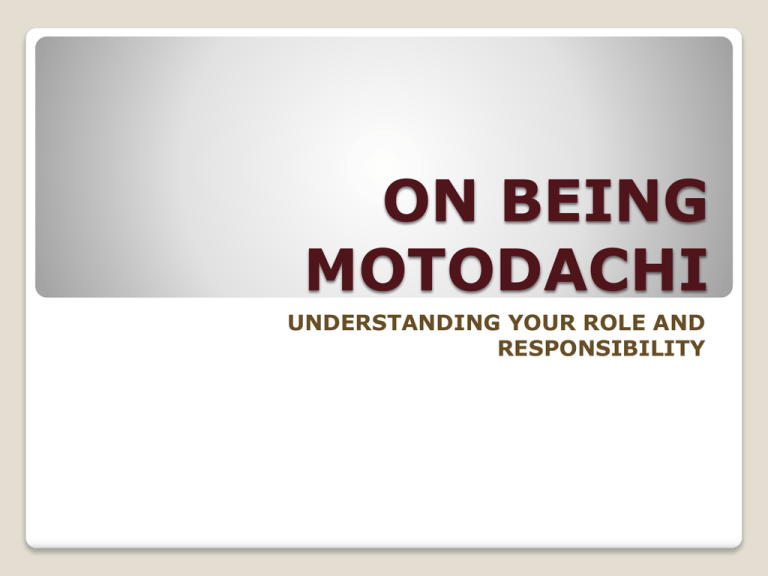
ON BEING MOTODACHI UNDERSTANDING YOUR ROLE AND RESPONSIBILITY What is a Motodachi? The one who takes the role of an instructor when developing their juniors or kohai. AJKF Kendo Dictionary Definition What this means: To guide and take responsibility for the development of your kohai and “pull them up”. What is Keiko Originally to study (Kei) ancient (Ko) times. This term is used for Bugei (martial arts study) (literal meaning of kanji for keiko). The word does not just mean practice but the importance of your attitude. How the training is connected to your daily life and creation of self through the practice of kendo. This unification becomes an important element in your michi or the do part of kendo. Receiving Kirikaeshi Kirikaeshi- points to be aware of: ◦ Breathing & Kiai – 2 breaths, kiai like singing one note indicating one breath ◦ Hands above head on men strikes ◦ Left hand in center on sayumen ◦ Correct hand position on strikes ◦ Okuriashi – not walking especially when going backwards ( juniors are big violators of this) Do NOT Ignore this – BE AWARE of your KOHAI Things a motodachi does When receiving kakari geiko do not be a post – interact and develop your oji waza. Receive them and make them do taiatari and hiki waza. Move in on them and force them to go, close in to make them hit out (hiki waza) Only move aside for brand new bogu people, experienced people need to go around you or taiatari. Description of Various Keiko Forms Uchikomi-used to train beginners and intermediates to strike the various targets. Limited to shikake waza, men, kote, kote-men, hiki-men and very limited migi doh, and hiki-doh. NO hidari doh or hikikote. Moto focus is on lifting of hands and position of hands, okuriashi, fumikomi, (no stepping with right foot). Be mindful of goose step, and right foot staying behind the right knee. Make them hit through on a straight line, turn the correct direction and moto moves aside after contact. Move back if you are going to receive them for taiatari and hiki waza. This encourages completion of footwork and helps to keep them from just walking into taiatari. Kakari – build up rensoku waza and stamina. Learn to see the openings, moto should open target after the kakari-te start their attack so they respond to the opening. Do not move out of the way, step in and receive the kakari-te and make them do hiki-waza. Make them go around you Mind their kiai & breathing is sufficient with good follow through. Yakusoku-moto leads kakari-te to strike various targets and waza (similar to uchikomi but more advanced. Gokaku–one on one between equals. Even if there is a difference the approach is as if both are the same level of development. Hikitate – method where the higher rank lets the lower rank strike without being obvious. This allows the kohai to experience success. The Motodachi Goldilocks Syndrome ◦ One is too mean; they bully and beat down the kakari-te. If the kakari-te doesn’t quit they will probably become a bully later. ◦ One is too nice; this one doesn’t push or correct the students and makes openings too obvious. • One is just right; they use their footwork and seme to teach the kakarite to see and feel the opening. They teach the student to sense the mental state of their partner. They run them to the edge but not over the cliff with the encouragement of “One more, one more”. They insure during the keiko that the students attitude is correct – sutemi, no running backward, no circling. They insure that the student is sincere and serious. Things a Motodachi Does Remember you are not doing shiai with them- especially the juniors, make them attack, do not tolerate poor attitudes and poor reigi. If a kyu backs away or tries to do keiko as an equal with kodansha this is bad and builds terrible manners and attitude. Correct this behavior. What to teach New people in bogu, provide obvious targets, move to the side and make them go through. Essentially uchikomi keiko at a slower pace. During the practice watch for and correct: ◦ Left hand that does not stay in the center during kirikaeshi. ◦ Feet are straight and in the correct relationship – no ayumi ashi ◦ Weight is 60% on left foot & 40% on right foot. What to teach Brand new bogu Pick up hands Do not rush them Correct too much right hand Correct too much upper body Re-enforce fumikomi so they develop hitting with hips and not arms and shoulders 3 Kyu and above Pick up hands Fumikomi Mind their posture when striking – no leaning in and bunny foot. ATTITUDE – sincere and serious Provide chances that are not obvious to develop shikake waza.
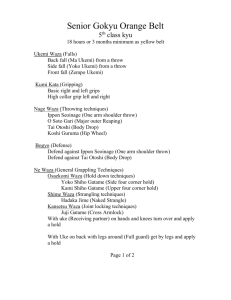
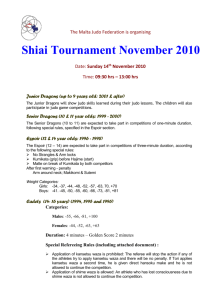
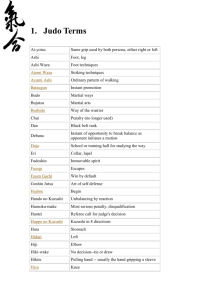
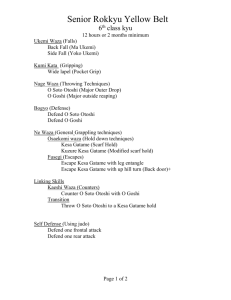
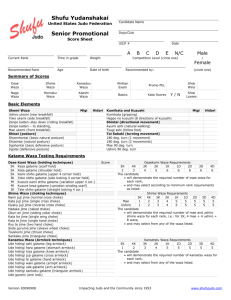

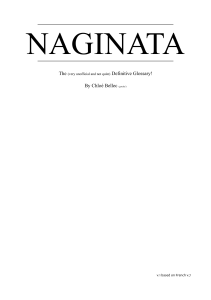

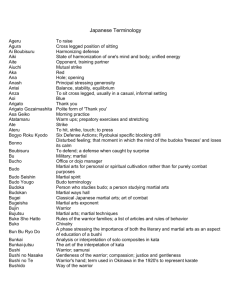
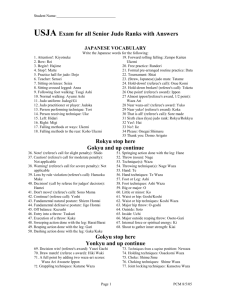
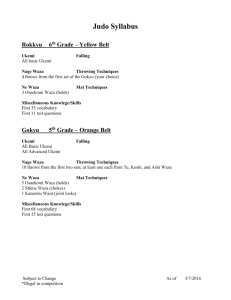
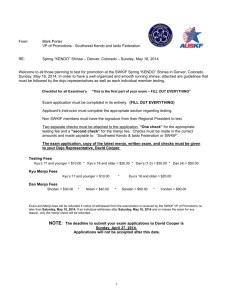
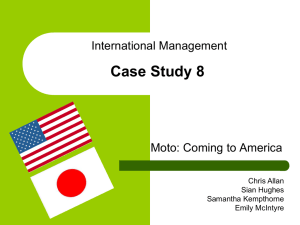



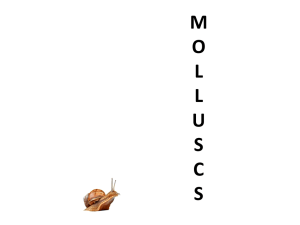
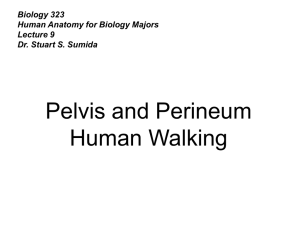
![The mysterious Benedict society[1]](http://s2.studylib.net/store/data/005310565_1-e9948b5ddd1c202ee3a03036ea446d49-300x300.png)

